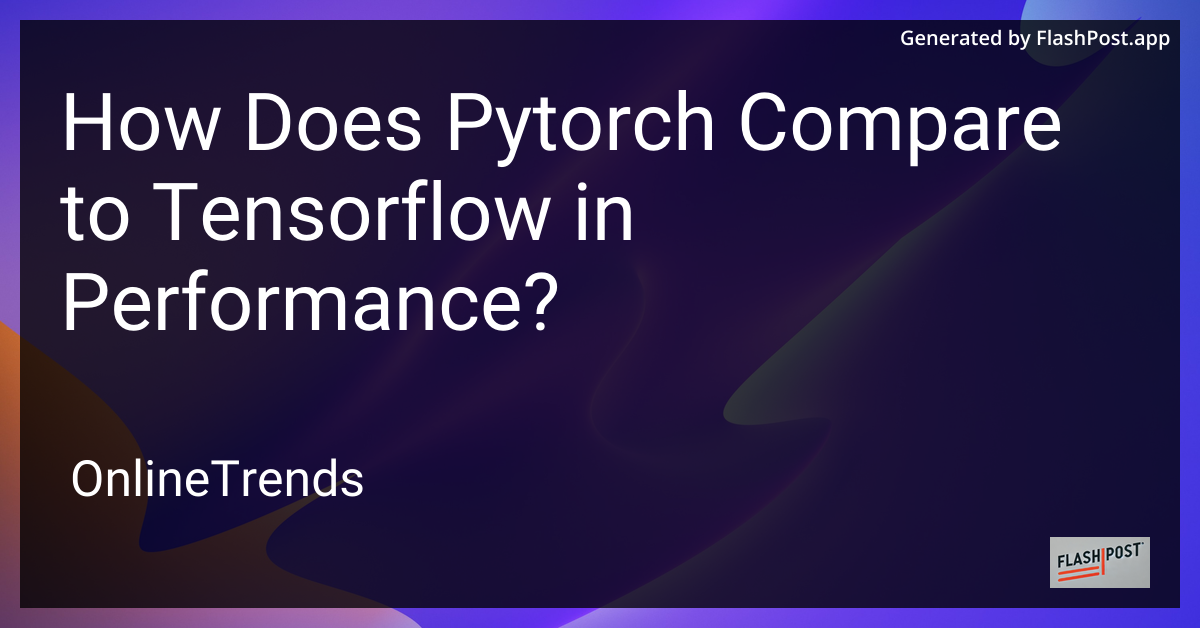
In the realm of deep learning frameworks, PyTorch and TensorFlow represent two of the most popular and widely-used tools available. Both have their strengths and weaknesses, but when it comes to performance, how do they stack up against each other? In this article, we delve into their performance characteristics to help you make an informed choice for your project.
The Basics of PyTorch and TensorFlow
PyTorch and TensorFlow are open-source libraries designed for high-performance numerical computations. PyTorch is celebrated for its flexibility and ease of use, while TensorFlow is renowned for its robust production capabilities and scalability. The choice between the two often boils down to user preference and specific project requirements.
Performance Comparison
Training Speed
When it comes to training speed, both frameworks are neck-and-neck, but their efficiency may vary based on the nature of the task. PyTorch is often favored for research and development due to its dynamic computation graph which allows for more intuitive debugging and faster iterations. Conversely, TensorFlow's static computation graph can offer optimizations that lead to faster training speeds in production environments.
Deployment Efficiency
TensorFlow excels in deployment scenarios, especially when it comes to deploying models on a large scale. TensorFlow Serving and TensorFlow Lite cater to a wide array of platforms, including mobile and IoT devices, making it a go-to option for deployment-heavy applications.
PyTorch, while not traditionally as strong in the deployment arena, has been making significant strides with the advent of TorchServe. This move has balanced the scales somewhat, allowing for more seamless deployment of pre-trained models.
Community and Ecosystem
The ecosystems of both PyTorch and TensorFlow are robust, but they have different areas of focus. PyTorch's data loaders and transformations make it highly appealing for data science experiments and research. TensorFlow, meanwhile, has ample support for a variety of community projects that enhance its deployment credibility, such as TensorFlow Extended (TFX).
Which Should You Choose?
The decision between PyTorch and TensorFlow ultimately hinges on the specific needs of your project:
- Research and Development: If your project is research-oriented, PyTorch's flexibility and ease of debugging make it a compelling choice.
- Production Deployment: For those focused on deploying models at scale, TensorFlow's mature tools and widespread platform support offer a significant advantage.
For more detailed understanding about PyTorch model formats and other functionalities, visiting the related links can be greatly beneficial.
Conclusion
In conclusion, both PyTorch and TensorFlow are powerful frameworks, each with its strengths and weaknesses regarding performance. Your specific use-case should guide your decision, whether it's the rapid prototyping capabilities of PyTorch or the extensive deployment options provided by TensorFlow. Make sure to factor in your team’s expertise and project requirements before making a choice.
By understanding the nuances of both frameworks, you can make an informed decision that aligns with your project's goals and performance needs.